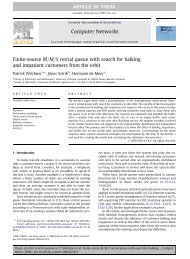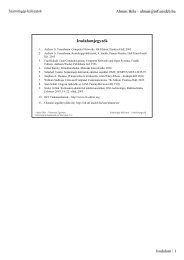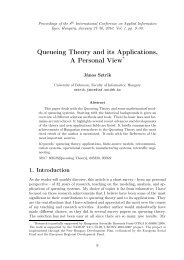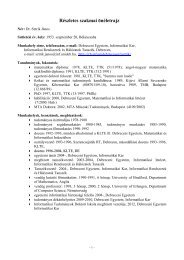Finite-Source Queueing Systems and their Applications
Finite-Source Queueing Systems and their Applications
Finite-Source Queueing Systems and their Applications
Create successful ePaper yourself
Turn your PDF publications into a flip-book with our unique Google optimized e-Paper software.
János Sztrik 2001/08/05<br />
Performance measures<br />
Because a queueing model represents a dynamic system, the values of the<br />
performance measures vary with time. Normally, however, we are content<br />
with the results in the steady-state. The system is said to be in steady state<br />
when all transient behavior has ended, the system has settled down, <strong>and</strong> the<br />
values of the performance measures are independent of time. The system is<br />
then said to be in statistical equilibrium, i.e., the rate at which jobs enter the<br />
system is equal to the rate at which jobs leave the system. Such a system is<br />
also called a stable system. Transient solutions of simple queueing systems<br />
are available in closed-form, but for more general cases, we need different<br />
techniques as described in for example, [9, 34].<br />
The most important performance measures are:<br />
Probability of the number of requests in the system Pk: It is often<br />
possible to describe the behaviour of a queueing system by means of the<br />
<strong>Finite</strong>-<strong>Source</strong> <strong>Queueing</strong> <strong>Systems</strong> <strong>and</strong> <strong>their</strong> <strong>Applications</strong>







